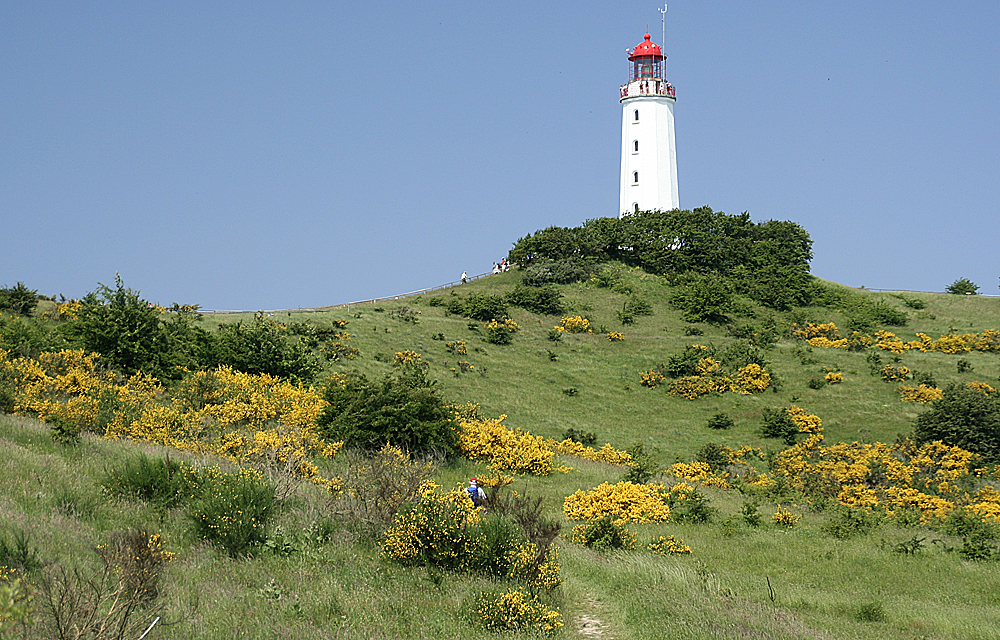Holiday Destination: The Unspoilt Islands of Germany. Posted by Constanze on Sep 2, 2014 in Holidays
As I am going on holiday this week I am in great spirits, and so I felt inspired to write this holiday-themed post for all of you who want to escape the cold weather (remember: It’s still summer somewhere in the world!).
When people think of beach holidays in Europe, they think of places like Portugal, Spain, Croatia and France, to name a few. Hardly anyone would think of adding Germany to that list. But did you know that Germany, too, has several beautiful beaches to call its own?
Germany is mostly a landlocked country, bordering with nine other European countries (Austria, Denmark, Czech Republic, Belgium, France, Poland, Switzerland, Netherlands and Luxembourg), so it is easy to see why people assume it has no coastline. However, it does: In norddeutschland (northern Germany).
OK. So you probably knew that already. But many people still don’t imagine Germany to be a destination for a beach holiday. But the German coastline, believe it or not, is a hidden treasure amongst European beach destinations!
The Baltic Coast (Ostseeküste) is located to the north-east of Germany, in the federal states of Schleswig-Holstein and Mecklenburg-Western Pomerania, and is a popular holiday destination both for tourists and natives who want to get away from the stress of city life. The seaside town of Heiligendamm, for example, dates back to 1793, and is nicknamed Die weiße Stadt am Meer (‘The white town by the sea’), due to its beautiful white buildings. This is Germany’s oldest beach town, and it was first developed for use by the aristocracy. Over the years it has had several influential visitors including George W. Bush – I guess you could call it the St. Tropez of Germany (!).
But as well as a coastline, Germany has numerous offshore islands to call its own. These are scattered between the Baltic Sea and the North Sea, and are serene little hideaways guaranteed to make you forget about the daily grind.
Baltic Sea Islands
Rügen Island
This is Germany’s largest island and is apparently excellent for surfers. The town of Suhrendorf is an especially prominent surfing town. There is even a “Surfhostel” you can stay at!
Hiddensee Island
As well as having beautiful, sandy beaches, this “sweet little isle”, as its known by its inhabitants, is part of the Boddenlandschaft National Park, and is a protected breeding ground for many species of bird. If it’s unspoilt nature you’re after, this is the German island for you.

“Hiddensee Dornbusch” by Manfred Betschinger – Own work. Licensed under CC BY-SA 3.0 via Wikimedia Commons.
Fehmarn Island
Nicknamed “the sunshine isle”, this sunny island has it all: beaches, cliffs, meadows, spa retreats – even kite-surfing! Fehmarn Island is a nature enthusiast’s dream.
Other German islands in the Baltic Sea: Vilm, Poel, Ummanz, Usedom, There are other Baltic islands (Greifswalder Oie, Walfisch Island, Langenwerder, Ruden) which are used as nature reserves, and are uninhabited.
North Sea Islands
Norderney Island
A spa resort island with 14km of white, sandy beaches and plenty of cycling and walking trails. Home to the annual White Sands Festival.
Sylt Island
Nicknamed “Queen of the North Sea”, this little island is great if you love sailing, kiteboarding, surfing and other water sports. It is famous for hosting the annual Windsurf World Cup, and for its expensive houses with quaint thatched rooves. It apparently has a good nightlife, too, with a handful of Michelin-starred restaurants including the 2-starred Sol’Ring Hof Restaurant at the Dorin Hotel.

“Dünenstrand auf Sylt” by temporalata – Beach with grass Uploaded by ZH2010. Licensed under CC BY-SA 2.0 via Wikimedia Commons.
Other German islands in the North Sea: Amrum, Baltrum, Borkum, Föhr, Hallig islands, Heligoland, Juist, Langeoog, Pellworm, Spiekeroog, Wangerooge.
Here is an aerial view of Spiekeroog:
The overriding characteristic of these little deutsche Inseln (German islands) is that they promote wellbeing and the great outdoors, and have a great respect for nature. So be it a relaxing beach holiday, an active water-sports holiday, a hiking trip through unspoilt scenery, or a rejuvenating spa break, you’ll find it on one of these German islands.
So next time you’re thinking of booking a relaxing mini-break, why not consider Germany?

Build vocabulary, practice pronunciation, and more with Transparent Language Online. Available anytime, anywhere, on any device.
About the Author: Constanze
Servus! I'm Constanze and I live in the UK. I'm half English and half German, and have been writing about German language and culture on this blog since 2014. I am also a fitness instructor & personal trainer.





Comments:
Anik:
I have never been there, so thank you for this note – i will print it and take it with me, while visiting Germany 😉
Constanze:
@Anik Glad I could help!